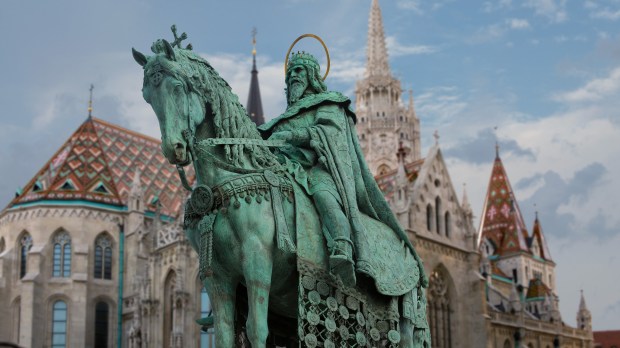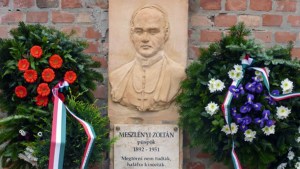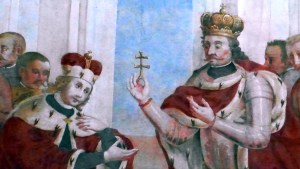I. Hungarian saints before Hungary
St. Quirinus of Sescia (unknown-309): the first martyr
Born in Sabaria – today’s Szombathely – at the beginning of the 4th century, Quirinus was a Christian martyr who refused to recant his faith during the persecutions of Diocletian in 309. Tortured by the governor of Pannonia (the Hungarian province of the Roman Empire), he was thrown into the river Sibaris with a millstone tied to his feet. His body was collected and preserved by the local Christians. His relics were later transferred to Rome to preserve him from vandalism during the great invasions. His remains rest today in the Basilica of St. Sebastian on the Via Appia.

St. Martin of Tours (316-397): the evangelizer of Gaul
Originally from Sabaria in Pannonia (now Hungary) at the beginning of the 4th century, this son of a military magistrate of the Roman Empire became a legionary and was posted to Gaul. Drawn to Christianity despite a pagan upbringing, Martin experienced a famous mystical conversion one day on a road. Coming across a poor man, he decided to cut his legionary cloak in half to share with him. Christ then appeared to him wearing the part of the cloak he had offered. Suddenly converted, he continued to fight in the army for two years, then was baptized and began to lead a hermit’s life. Renowned for his holiness during his lifetime, he was elected bishop of Tours in 371. A great evangelist, he is venerated in France, but also in his native country, particularly in his birthplace, Szombathely.
II. The founding saints of Hungary
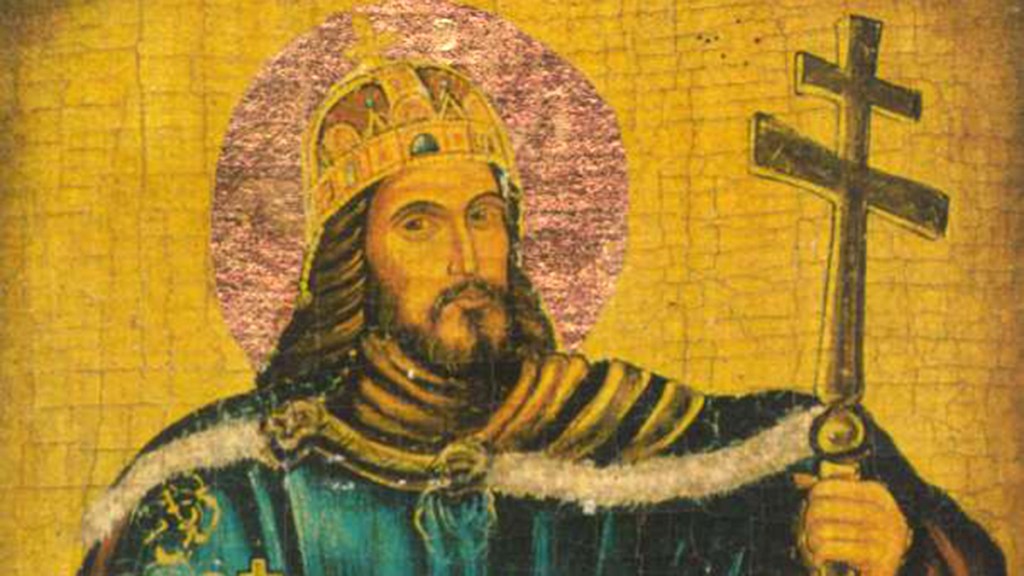
St. Stephen: the first king
The son of a pagan prince of Hungary in the 10th century, Vajk met Bishop Adalbert of Prague who baptized him and renamed him Stephen. In 996, Stephen married Gisele, sister of Emperor Henry II. After the death of his father, Stephen succeeded him and founded the kingdom of Hungary in the year 1000. He was coronated with a crown sent by Pope Sylvester II, who granted him the title of “apostolic king.” For 40 years, he organized his kingdom and evangelized it by bringing in missionaries and building many churches. Considered as a model of a Catholic monarch, he is the patron saint of Hungary. He was buried in the basilica of Alba Regia – today Székesfehérvar.
Blessed Gisele of Hungary: a pious queen
The sister of Emperor Henry II, Gisele received a very thorough Catholic education in the ducal court of Bavaria. While their parents had been fighting for a long time, Gisele was married to Stephen, a Hungarian prince, who founded the kingdom of Hungary in the year 1000 with the blessing of the pope and the emperor. This union was possible because of Stephen’s conversion. She and her husband had many children, including St. Emeric of Hungary. She was widowed in 1038, and Stephen’s successor, Peter, behaved like a tyrant and forced her into exile in Bavaria. There, she retired to the Benedictine abbey in Passau.
St. Emeric (1007-1031): Prince-Monk of Hungary
The youngest son of King Stephen and Queen Gisele, Emeric had St. Gerard, a Benedictine monk and future bishop of Csanád, as his tutor. His older brother having died at a young age, Emeric was carefully prepared for royalty, and led a particularly pious, even ascetic life in the abbey of Pannonhalma, befriending St. Maurus. However, his royal future forced him to be married to a Byzantine princess, and his father tried to have him succeed Emperor Henry II in Bavaria upon the latter’s death in 1024. Although he was the closest relative, his cause did not succeed and it was Conrad II who took the throne and went to war against Hungary. Emeric took part in the battle and his army won, but the prince renounced his claims to the Bavarian crown. He never reigned: in 1301, he was killed by a boar while hunting. He was buried in the Basilica of Alba Regia – today Székesfehérvar – next to his father.
Sts. Astrik, Adalbert, and Maurus: the first Benedictine bishops
Originally from Bohemia, Astrik and Adalbert visited Hungary in order to evangelize it. Adalbert founded the monastery of Brevnov in Prague, and Astrik, the abbey of Pannonhalma, the first ecclesiastical institution in Hungary, of which he became the first abbot. After becoming bishop of Prague, Adalbert baptized Stephen of Hungary, and then went on a missionary journey to East Prussia, where he was murdered by a pagan mob. St. Astrik was appointed bishop of Esztergom, and thus first bishop of the country. As a monk at the abbey of Pannonhalma, St. Maurus was one of the most important spiritual supporters of King Stephen. He became abbot of Pannonhalma and was appointed bishop of Pécs, where he built the first cathedral in 1036. This great intellectual and spiritual man distinguished himself by his action for peace in his country, which was then going through very violent conflicts.
St. Gerard of Csanád, St. Bőd and St. Bystrík of Nitra: the first martyrs of Hungary
Born in Venice at the end of the 10th century, Gerard Sagredo became a Benedictine monk. In order to go to the Holy Land, he passed through Hungary, where King Stephen ordered him to become the tutor of his son Emeric. Initially a hermit, he was appointed bishop of the diocese of Csanád, founded by the king, and was entrusted with the task of evangelizing an entirely pagan population. Together with three other bishops, Bőd, Bystrik and Beneta, he was attacked by a pagan mob. Bőd and Gerard died as martyrs, struck down with spears and stones on Buda Hill while on their way to the coronation of King Andrew in 1046. Bystrik and Beneta managed to flee across the Danube. On the other bank, in Pest, Bystrik was killed by a sword-wielding pagan. Only Beneta escaped, saved by the armies of King Andrew.
III. A holy dynasty
St. Ladislaus, a pious knight
Ladislaus I was king of Hungary from 1077 to 1095. Consolidating the kingdom and expanding its borders, he was a model of chivalry, and imposed strict legislation against all offenses against the Christian faith. We owe him the creation of the Diocese of Zagreb in present-day Croatia, which he conquered. Very much appreciated by his people, whose just protector he had wanted to be, he died surrounded by great prestige. The Hungarian people observed three years of mourning.
Venerable Irene of Hungary: Empress in Byzantium
Daughter of King Ladislaus, for political reasons the young Piroska was married at a very young age to John II Comnenus, son of the Byzantine Emperor Alexis. Forced to convert to the Orthodox Church, she was renamed Irene. She became empress after the accession to the throne of her husband, but did not deal with politics. Very pious, like her husband, she founded many monasteries. She was the mother of eight children and died in 1134. She’s recognized as a saint by the Orthodox and as venerable by Catholics.
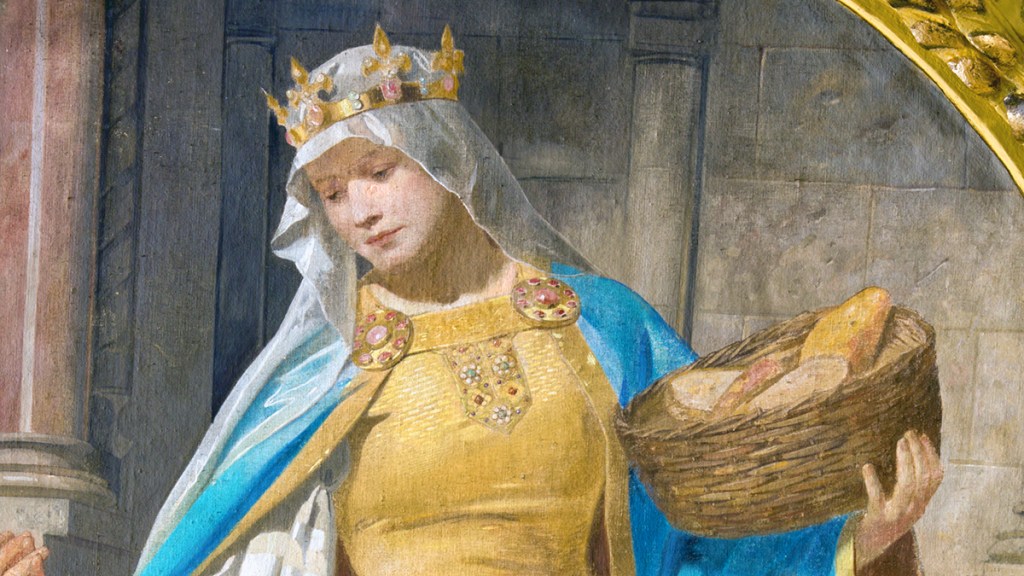
St. Elizabeth of Hungary: Franciscan sovereign
Daughter of King Andrew II of Hungary, an early 13th-century monarch, Elizabeth was betrothed at the age of four to the Landgrave of Thuringia, Louis IV, whom she married at age 14. This couple was close-knit despite the political nature of their union, and they had three children. They lived in great poverty, having embraced the principles of Franciscan life. Legend has it that while bringing bread to the poor and hiding it under her coat, she was stopped by her husband. She declared that she was hiding roses under her coat, and when she opened the flap of her garment, a shower of flower petals miraculously appeared. Her ascetic attitude scandalized her relatives, but she persisted. Her husband died from the plague, making her a widow at only 20 years old. Refusing to remarry, she was chased away by her in-laws and taken in by an uncle who was a bishop. She then devoted her life to the poor, inspired by the Franciscan Third Order, and led other women around her. She died at the age of 24.
St. Margaret of Hungary: Dominican princess
A niece of Elizabeth of Hungary, Princess Margaret was the daughter of King Béla IV, the Hungarian monarch who had to face the Mongol invasions at the time of her birth. Her parents vowed to consecrate her to God to save their country, and she was educated in a Dominican monastery in Veszprem. Developing a deep faith, she refused any marriage offered to her by her parents. Against their advice she embraced the poverty of the Dominican life, distributing all the riches she was given. She became known as a severe ascetic and a mystic. Pius XII canonized her in 1943.
St. Kinga of Poland: patron saint of Poland
Also called Cunegunda, Kinga was the sister of St. Margaret of Hungary. Against her will, she was married to King Boleslas V of Poland. Like Margaret, she dreamed of joining a religious order, and refused to consummate her marriage. Her husband accepted her will and decided to live a poor and chaste life with her. Much loved by the Polish people, she sold everything she owned upon the death of her husband and joined the Poor Clare monastery she had founded in Stary Sacz. John Paul II canonized her in 1999.
A saint of the Wars of Religion
St. Stephen Pongracz: martyr of Košice
Born at the end of the 16th century in Romania to a Hungarian family, Stephen Pongracz entered the Society of Jesus and was trained in Prague, Ljubljana and then Austria, where he was ordained. Sent to teach near Košice, in present-day Slovakia, he was arrested with two other companions – the Jesuit Melchior Grodziecki and a Croatian priest, Marko Krizin – by the Calvinist army of Bethlen, prince of Transylvania. Deprived of food for several days, they were then brutally tortured, and all died of their wounds. This caused an immense scandal among the population, which appreciated the three priests, and Prince Bethlen was forced to bury them with dignity. John Paul II canonized them in Košice in 1995.
